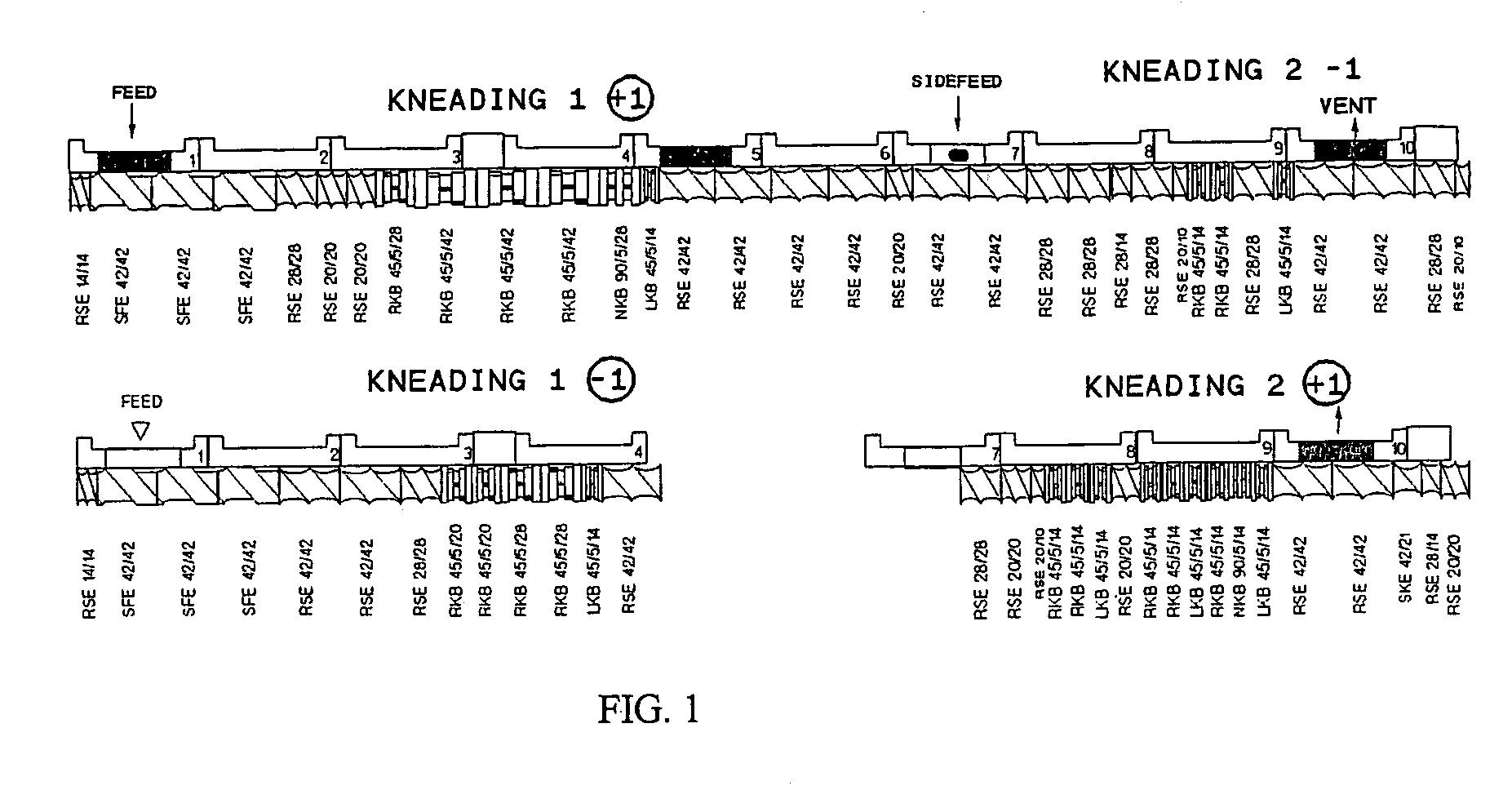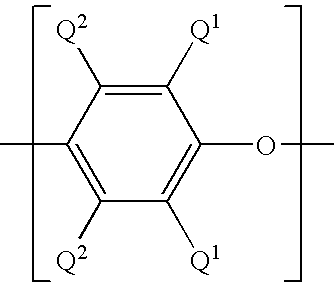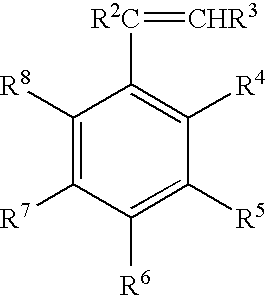Method for the preparation of a poly(arylene ether)-polyolefin composition, and composition prepared thereby
a poly(arylene ether) and polyolefin technology, applied in the field of poly(arylene ether)polyolefin composition and composition prepared thereby, can solve the problem of inadequate composition for many commercial uses
- Summary
- Abstract
- Description
- Claims
- Application Information
AI Technical Summary
Benefits of technology
Problems solved by technology
Method used
Image
Examples
examples 1 – 4
EXAMPLES 1–4, COMPARATIVE EXAMPLES 1, 2
[0096]Five formulations were compounded by various methods in a twin screw extruder. The components of the formulation are summarized in Table 1. The formulations and compounding methods are summarized in Table 2.
[0097]General Blending / Compounding Procedure: Using quantities specified in Table 1, components to be added upstream were hand mixed in a bag. The resulting mixture was subsequently mixed aggressively with a mechanical blender for uniformity. The uniform mixture was subsequently fed through a feeder and entered into an extruder at the extruder initial entry point. Downstream components were added at barrel 6 of a 10-barrel extruder.
[0098]General Extrusion: a 30 millimeter co-rotating twin-screw extruder was used. Blends were melt extruded at 520° F., 450–500 rpm, and a throughput rate of 30–50 pounds per hour. Melt from the extruder was forced through a three-hole die to produce melt strands. These strands were rapidly cooled by passin...
PUM
| Property | Measurement | Unit |
|---|---|---|
| temperature | aaaaa | aaaaa |
| weight percent | aaaaa | aaaaa |
| weight percent | aaaaa | aaaaa |
Abstract
Description
Claims
Application Information
 Login to View More
Login to View More - R&D
- Intellectual Property
- Life Sciences
- Materials
- Tech Scout
- Unparalleled Data Quality
- Higher Quality Content
- 60% Fewer Hallucinations
Browse by: Latest US Patents, China's latest patents, Technical Efficacy Thesaurus, Application Domain, Technology Topic, Popular Technical Reports.
© 2025 PatSnap. All rights reserved.Legal|Privacy policy|Modern Slavery Act Transparency Statement|Sitemap|About US| Contact US: help@patsnap.com



